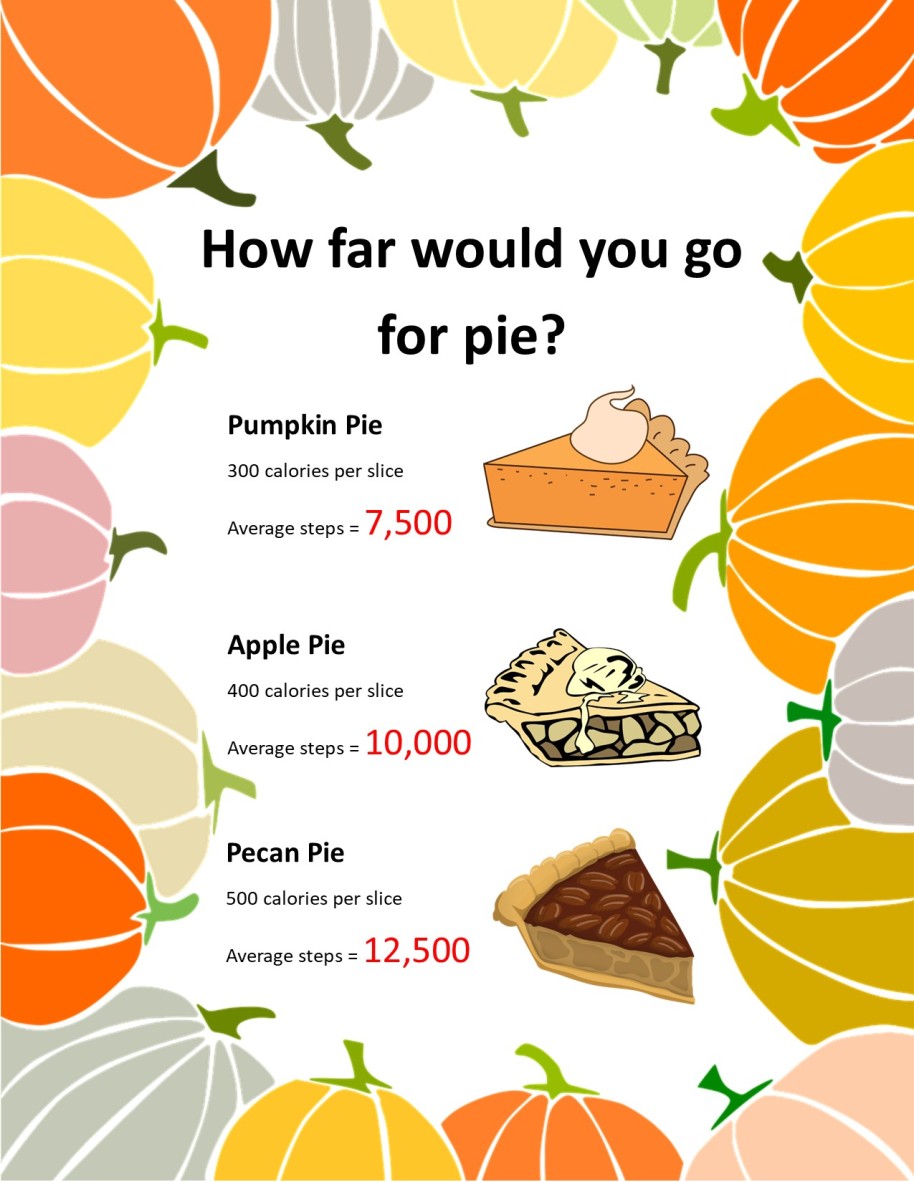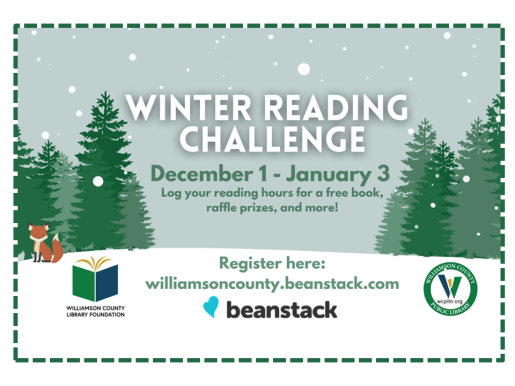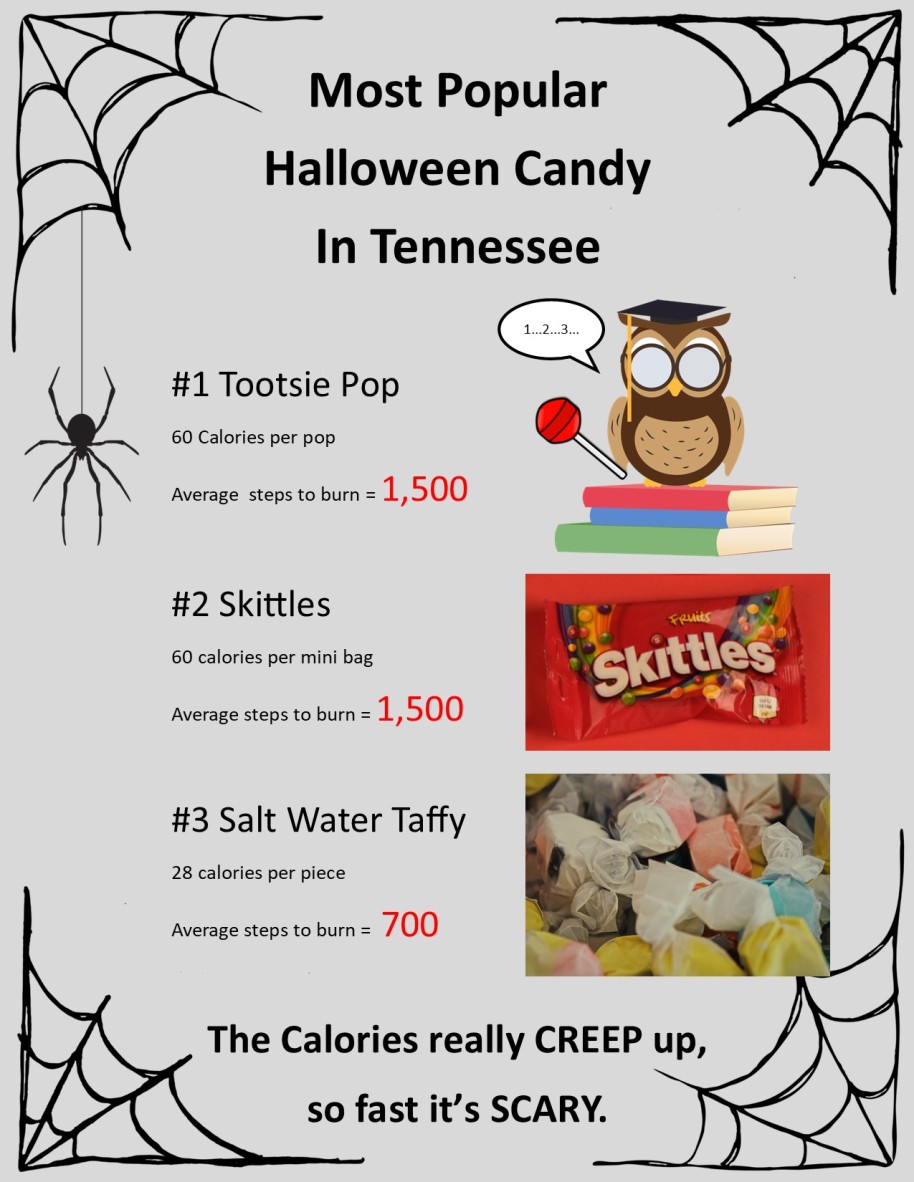Blog Archives
Winter Reading Challenge 2022-2023
If you are new to the reading challenges –
The beanstack homepage will show you the available reading programs at the library. You may choose from the Children’s program, the Teen program, or the Adult program.
The Account Creator is the person whose log in information will be used to access all accounts registered. Multiple readers can be added to the same account, even if they are registered for different programs.
*Example* A parent may sign up for the Adult program as the Account Creator and add children as Readers, or vice versa. Both the Account Creator and Reader will use the same sign-in information.
Following the prompts, register both the Account Creator and Readers, if any. A green band at the bottom of the screen will alert you that you are successfully registered.
Now you’re ready start exploring beanstack!
Logging Books/Minutes:
At the top of each Reader’s account, there is a green “Add to the Log” button.
- Click on the button when you are ready to log reading or activities. A window will open to allow you to log.
- If an account has more than one Reader, the first question will ask which account you wish to log under. Choose the appropriate Reader’s account. Then choose whether you are logging reading or an activity.
- Write the title and author of the book and decide if you want to write a review.
- Click the green “Log” button and watch for the green band at the bottom of the screen for successful logging. If you are unsure whether it logged successfully, close the window and click on “The Log” button at the top of the screen, under your name.
You will be notified by email when you earn a prize, what the prize is, and how to redeem that prize.
If you have any questions, please contact the library and we will be happy to assist you!
Hoopla Bonus Borrows Back for November

Bonus Borrows are back! Access these audiobook, eBook, comics, and video titles from hoopla Instant without using their borrows, and at no cost to libraries.
There are 409 free titles this month
137 Audiobooks
131 Ebooks
63 Movies
46 Comics
32 Television
Of these, 79 are Children’s titles
28 Audiobooks
22 Ebooks
17 Movies
9 Comics
3 Television
Hoopla has broken down the Bonus Borrows collection into categories such as Classics, Sci-Fi & Fantasy, Merry & Bright.
Excercise Challenge Begins in November
UT Extension is partnering with Williamson County Parks & Recreation and Williamson County Public Library for another seasonal Walking Challenge!
For motivation, here are the top three most common Halloween candies in Tennessee, with the calories in each, and how many walking steps the average person will need to burn those calories.
Coming in at #1 is Tootsie Pops, which are 60 calories per pop, which takes an average of 1,500 steps to burn. The #2 most popular candy is Skittles. The mini bags that come in Halloween candy are also 60 calories and will also take 1,500 steps to burn. The #3 most popular candy is Salt Water Taffy, which is only 28 calories per piece and will take an extra 700 steps to burn, but that’s for only one piece!
You can sign up for walking or running a half marathon or full marathon in both November and December after indulging in these holiday goodies, or make your own customized goal and plan for each month! We’ll send out a survey at the end, and if you met your goal, you could win a monthly pass from Williamson County Parks & Recreation to jump start your excercise routine in the new year.
When it’s too chilly to walk outside, make sure you check out some of the Indoor Recreation Facilities in Williamson County available through Williamson County Parks and Recreation, and make sure you take a look at some of the Williamson County Public Library digital collections, with music and audiobooks to keep you motivated and entertained while you excercise.
Sign up for the challenge here and keep an eye out for more motivation and resources to keep you moving this season!
How Far Would You Go for Pie?
It’s the time of year to be grateful for good food. What better way, than use the UT Extension Excercise Challenge to save up for that extra slice of pie we know we love.
Here are some of your favorite pies, and how many walking steps an average person needs to account for the calories. A slice of pumpkin pie is about 300 calories, which is 7,500 steps. A slice of apple is 400 calories or 10,000 steps. And pecan pie is a whopping 500 calories which needs 10,000 extra steps, so make sure you get walking this holiday season.
You can sign up for walking or running a half marathon or full marathon in both November and December to account for some sweet treats, or make your own customized goal and plan for each month! We’ll send out a survey at the end, and if you met your goal, you could win a monthly pass from Williamson County Parks & Recreation to jump start your excercise routine in the new year.
When it’s too chilly to walk outside, make sure you check out some of the Indoor Recreation Facilities in Williamson County available through Williamson County Parks and Recreation, and make sure you take a look at some of the Williamson County Public Library digital collections, with music and audiobooks to keep you motivated and entertained while you excercise.
Sign up for the challenge here and keep an eye out for more motivation and resources to keep you moving this season!

National Library Week: April 2 – 10

This week, Williamson County Public Library encourages all community members to visit our website to explore and access virtual services and programs. WCPL offers a wide array of online resources that are available from the comfort of home, including Overdrive, the Overdrive app- Libby, and Hoopla.
April 4-10, 2021 is National Library Week, a time to highlight the essential role libraries, librarians, and library workers play in transforming lives and strengthening communities. The theme for this year’s National Library Week is “Welcome to your library,” which promotes the idea that libraries extend far beyond the four walls of a building and that everyone is welcome to use their services. Whether people visit virtually or in person, libraries are accessible and inclusive places that foster a sense of belonging and community through learning, discovery and exploration.
During these challenging times, libraries of all types have been going above and beyond to adapt to our changing world by expanding their resources and continuing to meet the needs of their patrons. Libraries across the country are making a difference in people’s lives by providing electronic learning resources like online homework help and wi-fi access for students and workers who may lack internet access at home. WCPL is supporting the community with virtual services such as book clubs, gardening programs, meditation programs, crafting tutorials, etc.
This National Library Week, the public can show their appreciation and support for libraries by visiting their library’s website, following them on social media and using the hashtag #NationalLibraryWeek.
First sponsored in 1958, National Library Week is a national observance sponsored by the American Library Association and libraries of all types across the country each April.
For more information, visit wcpltn.org.
Press Release courtesy of The American Library Association
Holiday Closing April 2-4, 2021🐇

While our building is closed for the holiday, our library website is always open. Check our our eLibrary Books page to explore Tennessee R.E.A.D.S. (with OverDrive and Libby), and Hoopla to access eBooks and eAudiobooks. Searching our online catalog will also provide results for OverDrive and Hoopla.
Also, we have 24/7 homework help on our website (wcpltn.org) –> Reader’s Corner –> Homework and Research. Scan through our lists of Databases, either by category – this page has Research Tools on the right hand side. Or look through the alphabetically listed Databases. All of the listed databases have a description of how it can be valuable.
Have a safe weekend!
Amazon’s E-Book Monopoly
After the success of his lending library in Philadelphia, Benjamin Franklin wrote:
these Libraries have improved the general Conversation of Americans, made the common Tradesmen and Farmers as intelligent as most Gentlemen from other Countries, and perhaps have contributed in some Degree to the Stand so generally made throughout the Colonies in Defence of their Priviledges.
By making the incredibly costly books available to a non-elite membership, society and culture flourished. Unlike the collections in academia (at that time all in classic Latin and Greek), the public collections were in English – a balanced collection allowed for the intellectual prosperity of the public.
Fast forward 290 years and we have e-publishing: E-publishing is publishing books in digital format only. This allows authors and the publishing companies advantages over traditional print publication. Primarily it is cost-effective, there is an ease of creation and distribution, there is a wider reach into the community, it is easier to store, and it is better for the environment. In libraries, digital books supplement the print collection, providing both options for patrons.
2020 saw a dramatic increase in the number of digital book loans in libraries and schools. According to an Overdrive press release, “Librarians and educators achieved record levels of digital book circulation in 2020. Readers worldwide borrowed 430 million e-books, audiobooks and digital magazines in the past 12 months, a 33% increase over 2019.” The rise of the pandemic and social justice awareness had this incredible influence on this growth.

Image courtesy of Pixabay
When lending books, the First Sale Doctrine of US Copyright law permits the purchaser of a legal copy of copyrighted work to use it as they choose, as long as they do not infringe on the copyright owner’s rights. In other words, the copy can be given away, sold, destroyed, or rented. When it comes to electronic books, subject to Digital Rights Management, the book is not purchased from the publisher.
Consumers (You and I) are buying the license to access the digital copy of the book. Because a library grants multiple people in it’s community access to an e-book, a library pays three to five times the cost a consumer would pay for each license. These library licenses have a limit – either time (two years) or number of check-outs, whichever comes first. Also, a library cannot lend its license to another library, as they can with paper copies of books via Inter-Library Loans (ILLs).
As librarians we believe in copyright and the idea that the ownership of a work belongs to the artist, the author, the creator, and they should be paid for their work; we must also work within the boundaries set by publishing companies. They contend that libraries reduce book sales, when in fact, library lending increases book sales. Patrons get a taste of a new (to them) author or genre and will purchase books. As stated in the Panorama Project report, “Libraries, bookstores, and online channels mutually reinforce each other, leading to engagement and sales.”
NOW – enter Amazon e-publishing. Amazon started as an online bookseller and when digital books broke wide open, they were in it to win it. They sold readers, (Kindle), tablets, e-books, real books, subscriptions, and then, well, pretty much EVERYTHING. They also started a company for publishing electronic books and audio books (Audible), about ten years ago, with an offshoot for self-publishing. After evolving into a publishing behemoth over the last decade, you ARE NOT able to “borrow” the e-books they publish at your library.
Why? Because this tech giant has made the business decision to not sell downloadable versions of their products to libraries. In an article in The Washington Post on March 10, 2021, Geoffrey A. Fowler writes,
That’s right, for a decade, the company that killed bookstores has been starving the reading institution that cares for kids, the needy and the curious.
Not surprisingly, Amazon’s charts of bestsellers beat out the New York Times bestsellers, yet Amazon bestsellers do not end up on the New York Times bestseller’s lists. With a captive audience reading on a Kindle complete with a subscription to Amazon Prime and a link to Alexa, the many tentacles of this giant monopoly can propel it’s consumers to keep feeding the beast.

Image courtesy of Pixabay
According to Fowler, when the American Library Association testified before Congress it called digital sales bans like Amazon’s “the worst obstacle for libraries” moving into the 21st century. New York and Rhode Island Lawmakers have proposed bills that would require Amazon (and everybody else) to sell e-books to libraries with reasonable terms. In Maryland, the House of Delegates unanimously approved its own library e-book bill, which now heads back to the state Senate. And while Amazon is in talks to define a new model for library lending with a nonprofit aptly named Digital Public Library of America, it would not help the majority of libraries in America which purchase and distribute e-books through Overdrive and Hoopla.
Amazon’s monopoly results in libraries, public libraries losing on the chance to provide access to these e-books to their patrons. Public libraries are here to serve citizens. Libraries are the great equalizers among American citizens. As Franklin understood, few individuals could afford a large enough collection to be well informed and your library fills the void. By excluding libraries from purchasing the digital rights to their e-books, Amazon impedes the mission of public libraries to provide the access essential in advancing the aspirations of the underserved.
D. Duff, Reference
Resources:
http://www.benjamin-franklin-history.org/lending-library/
https://kitaboo.com/advantages-digital-publishing-platform/
https://cals.org/blog/publishers-are-changing-e-book-access-for-libraries/
https://www.nolo.com/legal-encyclopedia/the-first-sale-doctrine.html
https://www.washingtonpost.com/technology/2021/03/10/amazon-library-ebook-monopoly/ Amazon’s monopoly is squeezing your public library, too – The Washington Post
🍀Rolling in the Clover☘️
By Dori Duff
A three leaf clover is a shamrock, a four leaf clover is, well, a four leaf clover 🍀 and NOT a shamrock ☘️

Shamrock, Pixabay
The shamrock is an emblem of Ireland and a symbol for St. Patrick, who purportedly used a shamrock to explain the Christian concept of the Holy Trinity — in that three, in fact, can be one. The shamrock, not to be confused with the four, five, or six leaf clover, is commonly used on St. Patrick’s Day and is associated with Irish culture.

Four Leaf Clover, Pixabay
The three leaves of a shamrock, while may have been used to explain the Holy Trinity of Christianity, are said to represent faith, hope, and love, in that order. The fourth leaf on a clover represents luck, a fifth leaf can represent wealth, and a coveted six leaf clover can bring the owner longevity. The odds of finding a four leaf clover, on a first try, is one in ten thousand, and the odds of similarly finding a five leaf clover jumps to one in one million.
According to the Old Farmer’s Almanac, legend has it that the four leaf clover is lucky in that it would enable the carrier to “see fairies, recognize witches and evil spirits, and be protected from the evil eye. Even dreaming of clover was supposed to bring good luck.”
Due to a large variety of clover plants, there is some debate among botanists and lay-people about which plant of the genus Trifolium (“having three leaves”) is the ‘real’ clover plant. Most will agree that the White Clover is probably the original shamrock of Irish tradition. White Clover (Trifolium repens) was not always viewed as a challenging weed – in fact, until the mid-twentieth century, White Clover was included in lawn seed mixes as low maintenance, attractive ground cover. Recently, White Clover seems to be experiencing a resurgence as a more ecologically friendly lawn alternative.
And given that my yard is covered in White Clover, well, I seem to be in luck🍀
Irish folklore nonfiction titles in our catalog:
Irish Blessings: With Legends, Poems & Greetings
398.209 IRI
Irish Popular Superstitions by Sir William R. Wilde
398.2 WIL
Ancient Irish Tales by Tom Peete Cross and Clark Harris Slover
891.623 ANC
And in Hoopla:
Irish Stories and Folklore by Stephen Brennan
Resources on clover and statistics:
Minitab Blog
Old Farmer’s Almanac
Six Leaf Clover Find
Tenon Tours





